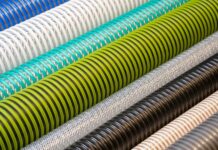
Engineers with the University of Cincinnati are leveraging a partnership with Wright-Patterson Air Force Base to create clothing that can charge your cell phone.
Move over, Iron Man.
What makes this possible are the unique properties of carbon nanotubes: a large surface area that is strong, conductive and heat-resistant.
UC’s College of Engineering and Applied Science has a five-year agreement with the Air Force Research Laboratory to conduct research that can enhance military technology applications.
UC professor Vesselin Shanov co-directs UC’s Nanoworld Laboratories with research partner and UC professor Mark Schulz. Together, they harness their expertise in electrical, chemical and mechanical engineering to craft “smart” materials that can power electronics.
“The major challenge is translating these beautiful properties to take advantage of their strength, conductivity and heat resistance,” Shanov said.
Schulz said manufacturing is at the cusp of a carbon renaissance. Carbon nanotubes will replace copper wire in cars and planes to reduce weight and improve fuel efficiency. Carbon will filter our water and tell us more about our lives and bodies through new biometric sensors.
Carbon will replace polyester and other synthetic fibers. And since carbon nanotubes are the blackest objects found on Earth, absorbing 99.9 percent of all visible light, you might say carbon is the new black.
“In the past, metals dominated manufacturing goods,” Schulz said. “But I think carbon is going to replace metals in a lot of applications.
“There’s going to be a new carbon era—a carbon revolution,” Schulz said.
One of them, UC research associate Sathya Narayan Kanakaraj, co-authored a study examining ways to improve the tensile strength of dry-spun carbon nanotube fiber. His results were published in June in the journal Materials Research Success.
Graduate student Mark Haase, spent the past year exploring applications for carbon nanotubes at the Air Force Research Lab of Wright-Patterson. Through the partnership, UC students use the Air Force Lab’s sophisticated equipment, including X-ray computer tomography, to analyze samples. Haase has been using the Air Force equipment to help his classmates with their projects as well.
Read more: Carbon is the new black
thumbnail courtesy of phys.org














